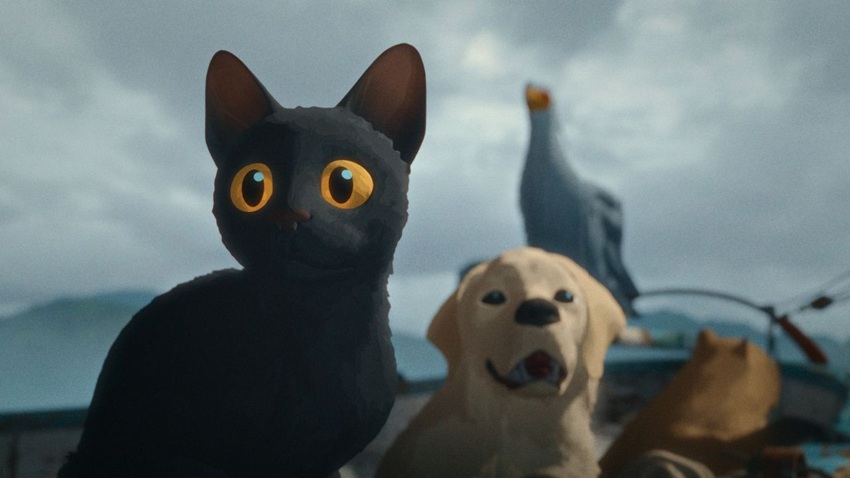
A plot description makes Flow sound like a high-concept kiddie film. Animated animals on a boat attempt to survive a surging flood. To do so a cat and a dog and a bird and a capybara must learn to check their instinctual animal enmity for one another and coexist as a necessary condition for living. One of Flow‘s greatest achievements is that it manages to make this premise appear plausible. The animals never lose their identities. They are not anthropomorphized. Their actions and instincts remain recognizable. Perhaps most importantly, they do not speak. The film is Exhibit A for the cliche that actions speak louder than words. The animals are not mouthpieces for human sermonizing. They are examples or illustrations. This keeps the film tethered to realism in a way that allows us to see the moral message of the film, that coexistence is possible. And if animals can learn to live with one another, surely humans can. Another truth that is poignantly displayed through the film’s ending is that sometimes reciprocation is not possible. There is an animal that helps the crew survive during the flood that they simply cannot help in return. But they try, and when they can’t, we sense their attempt and their presence is a comfort to a fellow creature that is suffering. Sometimes you give, you help, not because you expect to receive in return but simply because someone else is in need and because you can. Perhaps there is such a thing as moral instinct, a force within us that tells us without having to reason what is morally correct. If there is, it is worth asking how it got there. In a time of increasing environmental catastrophes and increasing political polarization, a film that insists that kindness and cooperation are not only possible but necessary feels like essential viewing for weary souls. — Kenneth R. Morefield (2024)
Arts & Faith Lists:
2024 Arts & Faith Ecumenical Jury — #3
2025 Top 100 — #74